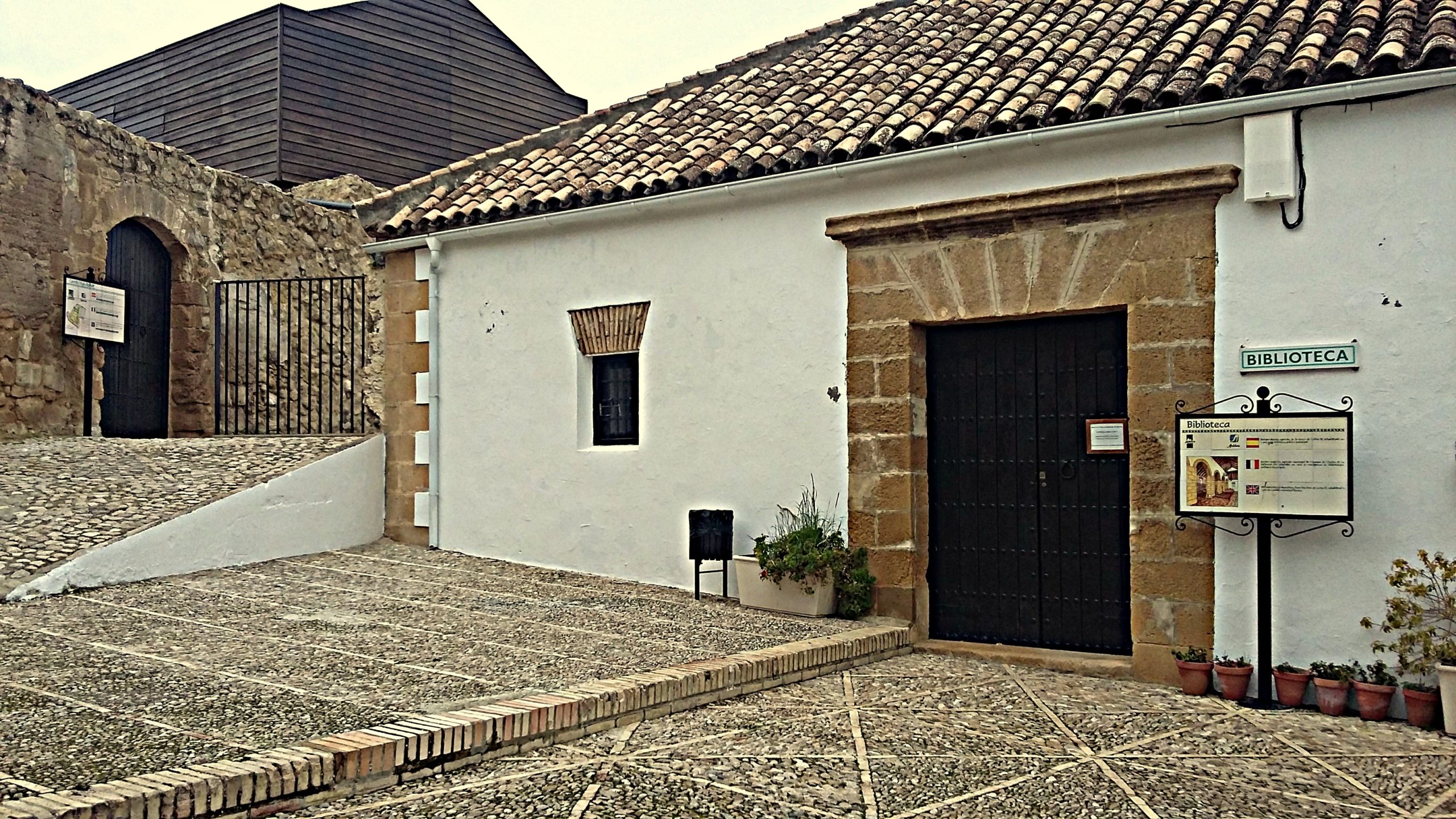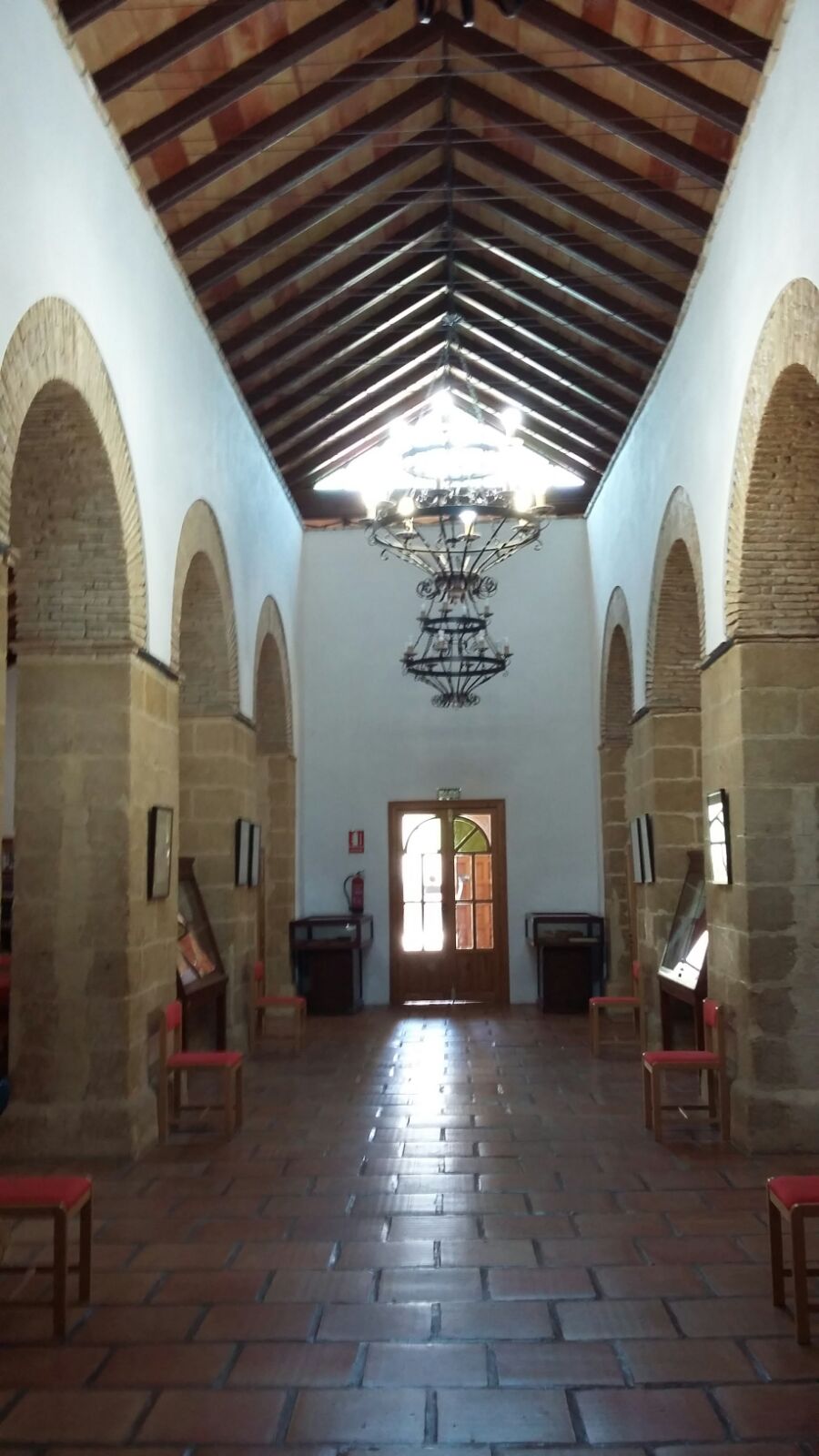
Español
Este edificio fue una de las ampliaciones del Castillo en el siglo XVIII. En aquel tiempo era el pósito, un edificio municipal que servía de almacén de cereales. En el año 1989, fue restaurado y reconvertido en Biblioteca Municipal, conservando su estructura original y la arquería del interior. En esta biblioteca, además de gran cantidad de volúmenes y manuscritos originales como atestados criminales, estados de cuentas…, podemos apreciar una carpeta de grabados del artista local Antonio Quintana en colaboración con el premio Nobel Vicente Alexandre o Los Episodios Nacionales firmados por su propio autor, además de obras de ilustres iznajeños como Cristóbal de Castro.
Audio

English
This building was one of the castle´s extentions in the XVIIIth century. In those times it was a granary, used to stock the cereals. In 1989 it was renovated and converted into the Municipal Library, conservating its original structure and arquitectura.
In this library, besides the large amount of original volumes and manuscripts like police or financial statements, we can apreciate a recording folder from the artist Antonio Quintana in collaboration with the Nobel Vicente Alexandre and the nacional episodes, signed by its own autor, as well as pieces from illustrious artists of Iznajar, like Cristóbal de Castro.
Sound

Français
Cet édifice fut l’une des amplifications du château durant le 18e siècle. En ces temps c’était le grenier, un édifice municipal qui servait de stock pour les céréales. En 1989, il fut restauré et reconverti en Bibliothèque municipale, conservant sa structure originelle et arcades intérieures. Dans cette bibliothèque, en plus de la grande quantité de volumes et manuscrits originaux comme des rapports policiers, états de comptes, etc. nous pouvons apprécier un catalogue d’enregistrements de l’artiste local Antonio Quintana en collaboration avec le Prix Nobel Vicente Alexandre ou encore les épisodes nationaux signés par l’auteur, ou encore les œuvres d’illustres artistes iznareniens comme Cristóbal de Castro.
Son
Este edificio fue una de las ampliaciones del Castillo en el siglo XVIII. En aquel tiempo era el pósito, un edificio municipal que servía de almacén de cereales. En el año 1989, fue restaurado y reconvertido en Biblioteca Municipal, conservando su estructura original y la arquería del interior. En esta biblioteca, además de gran cantidad de volúmenes y manuscritos originales como atestados criminales, estados de cuentas…, podemos apreciar una carpeta de grabados del artista local Antonio Quintana en colaboración con el premio Nobel Vicente Alexandre o Los Episodios Nacionales firmados por su propio autor, además de obras de ilustres iznajeños como Cristóbal de Castro.
This building was one of the castle´s extentions in the XVIIIth century. In those times it was a granary, used to stock the cereals. In 1989 it was renovated and converted into the Municipal Library, conservating its original structure and arquitectura.
In this library, besides the large amount of original volumes and manuscripts like police
or financial statements, we can apreciate a recording folder from the artist Antonio
Quintana in collaboration with the Nobel Vicente Alexandre and the nacional episodes, signed
by its own autor, as well as pieces from illustrious artists of Iznajar, like Cristóbal de Castro.
Cet édifice fut l’une des amplifications du château durant le 18e siècle. En ces temps c’était le grenier, un édifice municipal qui servait de stock pour les céréales. En 1989, il fut restauré et reconverti en Bibliothèque municipale, conservant sa structure originelle et arcades intérieures. Dans cette bibliothèque, en plus de la grande quantité de volumes et manuscrits originaux comme des rapports policiers, états de comptes, etc. nous pouvons apprécier un catalogue d’enregistrements de l’artiste local Antonio Quintana en collaboration avec le Prix Nobel Vicente Alexandre ou encore les épisodes nationaux signés par l’auteur, ou encore les œuvres d’illustres artistes iznareniens comme Cristóbal de Castro.


